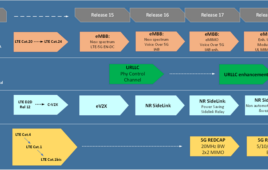Samsung today expanded its Galaxy portfolio beyond the letter “S,” with a new naming strategy for future devices. The creation of the new naming system is marked by the release of four new GALAXY smartphones; the Galaxy W, Galaxy M Pro, Galaxy Y and Galaxy Y Pro will all come running Android 2.3 Gingerbread operating systems.
Samsung called the new lexicon a “simplified system” for naming its smartphones, saying in a press release that the new naming structure will organize and group all devices into five classes, identified by a single alphabetical letter. Devices will then be further designated by an additional indicator which will identify specific functionality.
 “As Samsung continues to innovate, our goal is to provide consumers with an experience uniquely tailored to their needs. We have introduced steps to ensure users can simply identify the device designed to deliver the perfect experience for them,” said JK Shin, president and head of Samsung’s mobile communications business, in a statement.
“As Samsung continues to innovate, our goal is to provide consumers with an experience uniquely tailored to their needs. We have introduced steps to ensure users can simply identify the device designed to deliver the perfect experience for them,” said JK Shin, president and head of Samsung’s mobile communications business, in a statement.
According to the new naming structure, class designators refer to the specific category into which the smartphone product fits. For example, a premium device might be market with an ‘S,’ while an entry-level device might be marked with a ‘Y.’All classes will be used within the higher branding of the ‘Galaxy’ line of smartphones.
The specifics of the new naming structure, as provided by Samsung, are as follows:
• “S” (Super Smart) – Devices at the very pinnacle of Samsung’s mobile portfolio. This class will only be used on flagship devices such as the Samsung Galaxy S, the award-winning smartphone that has already sold 10 million units throughout the world.
• “R” (Royal / Refined) – Premium category models, a combination of power, performance and productivity for the individual who wants to be defined by the technology they carry.
• “W” (Wonder) – High quality, strategic models, perfect for those seeking a balance between style and performance.
• “M” (Magical) –High-performance models at an economic price-point.
• “Y” (Young) – These are entry models or strategic models for emerging markets or a younger audience more sensitive to price.
Class indicators allow a more specific description of the key selling points of a device:
• “Pro” – This indicates that the device includes a qwerty keyboard for speedier email typing and increased productivity for professionals.
• “Plus” – This indicates that the device is an upgrade from an existing model.
• “LTE” – This indicates that the device is designed to utilize LTE (Long-Term Evolution) connectivity standards, a 4G standard to provide increased mobile network capacity and speed.
While this was just a teaser announcement for the four new Galaxy devices, which the company says it will launch at the consumer electronics show IFA in Berlin on Sept. 1, Samsung did offer a few specifics on what to expect.
The Galaxy W will feature a 1.4 GHz processor, HSDPA 14.4 Mbps connectivity and a 3.7-inch touchscreen. The Galaxy M Pro takes on a BlackBerry form factor, with a full physical qwerty keyboard and includes integration of a variety of enterprise solutions, including Exchange Active Sync, Sybase Afaria, CISCO Mobile and CISCO WebEx.
The scaled down Galaxy Y will feature an 832 MHz processor and touchscreen, while the Galaxy Y Pro will follow with a full QWERTY keyboard.




